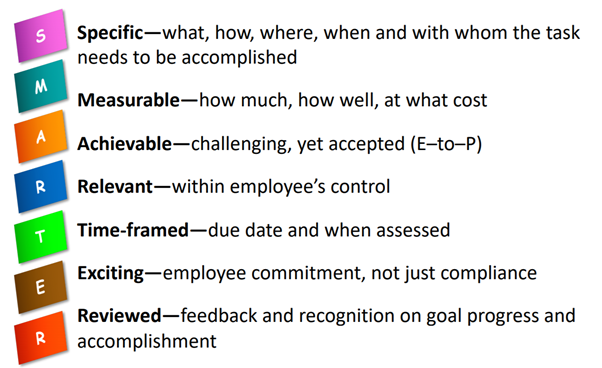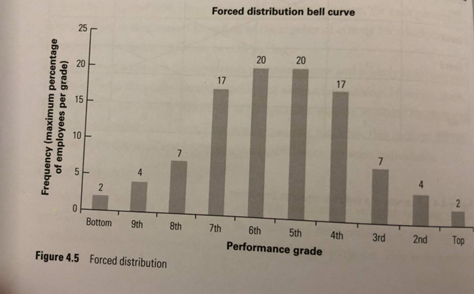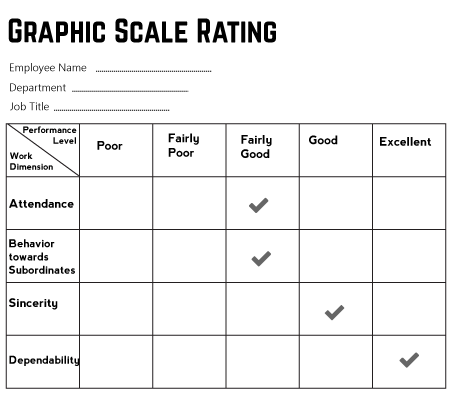Performance Management Assignment: Case Analysis Of Country Public Ltd
Question
Task:
Analyze the case of Country Public Ltd (CPL) and prepare a performance management assignment illustrating the current performance management system of the company and recommend a revised strategy for the company’s welfare.
Answer
Executive summary
This report on performance management assignment critically analyzes the current performance management system at Country Public Limited (CPL). CPL is a public sector organization that was established by the Indian government to provide electric equipment. The organization utilized its access to new technologies and research and leveraged its government support platform to increase their business opportunity and expand globally. They are now regarded as one of the leading innovative telecommunications organizations.
During CPL’s ongoing operation, a number of issues have been identified throughout the organization. CPL adopts a performance-related pay plan (PRP) of forced distribution, which ranks employees on a bell curve, which can differentiate between low performing, average and high performing employees and contributes to PRP. Issues such as dissatisfaction with existing base pay, managerial and employee confusion with grading systems and lack of validity and reliability for performance appraisals will be discussed. Upon research of relevant academic literature, more appropriate and successful performance management, practices and theories have been analyzed and applied to the case. This report will design and recommend a revised performance management strategy, which will have positive implications for staff retention and employee satisfaction.
Introduction
Performance management systems are complex and multi-dimensional, however when the correct balance between organizational strategy and stakeholder expectations is found, they can contribute significantly to competitive advantage (Shields et al. 2020, p.4). Currently, CPL operates under a forced distribution rating system. This performance appraisal system sees managers rate employee performance relative to one-another and ultimately distribute them into a predetermined performance category or grade with the use of specific performance criteria (Moon et al. 2016, p.166).
At CPL, there have been a number of triggering events including declines in profit and employee resignations, which have forced CEO Raghav Dutta to conduct a human resource investigation. This report will identify current issues and critically analyze the current practices, against those with proven success in researched literature.
Current Performance Management Issues
As per the case research, it is essential to determine the performance management challenges of employees. Raghav Dutta is the general manager of the Country Public Limited. It has been reviewed that the net profit of the organization has been reduced by 25 percent in contrast to the last year. Since the business partners were unsuccessful in supplying inputs on the prescribed period, hence there was a subsequent decline in profits. It greatly affected the overall administration of the enterprise as well as the workers. The general manager was worried since the issue was of not only declining profits but also losing efficient workers. The objective measures, such as the KPIs and the KRAs are not communicated properly, which therefore increases the subjectivity once again of the system. Grote (2003, p.6) states a successful forced ranking system should ensure all members understand what the expectations and goals are and the performance appraisal needs to be fair, objective and honest to let appraises know where they truly sit. As a result, dysfunctional competition arises; as low-graded managers go on to grade their subordinates low. Finally, no feedback or counseling is offered to those with low grades leaving those with the lowest scores no way to know what they need to improve for the next review.
CPL is contributing to employee dissatisfaction as both the “hygiene” and “motivator” factors in Herzbergs model for employee satisfaction are not being met (Alshmemri, Shahwan-Akl & Maude 2017, pp.12-13). It is reported in the case that base pay for employees at CPL, which is a hygiene factor, is lower than employees in the private sector, and this contributes to employee discontent and unhappiness. The survey conducted in the case identifies that monetary factor is not the dominant employee motivator, however PRP is divided up by CPL as an annual cash payment, therefore they have ignored the need of the employee, which has damaged the psychological contract (Cappelli and Tavis, 2016, pp 58-67).
The PRP is lacking in felt-fairness, as seniority is favored over merit, creating hierarchal disruption. Young managers are particularly frustrated, as they are being offered PRP incentives that are significantly lower than seniors and executives. This creates an issue of organizational justice and perceived fairness. In addition to this, CPL has promised certain employees 40% PRP payments but actually delivered much lower, fragmenting organizational trust. It is also worth noting that PRP is solely based on CPL’s forced ranking system. CPL should adopt a more employee-centred approach as Jawhar (2007, p.749) writes that when the outcome of an appraisal is pay-related, importance needs to be placed on the employees’ perceived perception of fairness, procedural and distributive justice. When this is achieved, employees are satisfied and will display the behaviors that are desirable for performance outcomes (Shields et al. 2020, p.54).
Pfeffer and Sutton (2006, p.7) describe forced ranking as the reason for organizations to suffer from lower productivity, inequity, skepticism, decreased employee engagement, reduction collaboration, mistrust in leadership and it is exactly what happens to CPL.
Recommendations
For an effective performance management system, it is significant to identify crucial theories that underpin the performance management of employees. Hezerbergs model of employee satisfaction has already been mentioned and base pay is a hygiene factor. Employees’ expectations that remuneration will reflect their contribution is not being met and therefore CPL may consider conducting market survey research and determine base pay on a job based contingency that matches the external market. In conjunction with bringing base pay into line with other organizations in the sector, CPL needs not to communicate unrealistic PRP percentages to employees as a tactic to attract talent if they are unable to provide these to employees.
Next, we believe that CPL needs to implement Locke and Latham’s goal setting theory into their performance related contingencies. Upon distinction of employees on the bell-curve, managers should work with employees and set SMARTER goals, which are aimed at advancement into the next performance grade (see Appendix A). This gives employees achievable performance objectives, strategic focus and can help to clarify role perceptions, which can reduce dysfunctional competition. These goals need to also be periodically reviewed throughout the year to ensure that they are still relevant come the time of the review and contribute to the organization’s objectives. In addition to the above mentioned approaches, goal theory is also applicable. As per this approach, the reliable objectives are framed for the adequate performance of a particular individual and organization
Managers should all receive formal training on how to assess employee performance so this process becomes standardized across the business increasing the perception of procedural fairness (DeNisi & Murphy 2017). Employees who achieve lower performance ratings need to have regular performance conversations and receive actionable feedback with their managers to ensure that they are improving their performance and contributing positively to CPL’s goals and objectives (Bellisario and Pavlov, 2018, pp 367-385) (Appendix C has been applied here)
In terms of PRP, it is essential to set up a cap for the maximum amount of incentives an individual receives. The amount will vary based on the individual’s level in the company and it will protect managers’ interest. This will ensure when PRP is distributed, pay is allocated more fairly, across CPL. When it comes to an outstanding employee who constantly achieves objectives and receives bonuses, CPL will need to consider a promotion or a pay rise to retain the talent. This is because employees who feel that their career is progressing are more likely to possess a higher sense of job satisfaction and lower staff turnover rates (Amundsen & Martinsen 2014, p.787).
A proposed timelines of events has been suggested in Appendix B which outlines who, when and what different employees in the company need to do at different points of the cycle. This will increase transparency in the overall process and place higher importance on the system improving its validity and increase employee satisfaction.
Implications for CPL
By implementing the outlined plan above, employees and managers will feel a greater sense of perceived fairness in the performance appraisal system at CPL, as objectives and goals will be clearer meaning employees will have a greater understanding on how ratings are achieved.
The steps that must be complied with are-
- The benchmarks based on performance management must be set in such a manner that helps to analyze the blueprint of successful performance management.
- The organizational objectives must be demonstrated that is desired to be acquired by implementing a technique based on performance management.
- The important points that must be taken into account for the achievement of each objective must be established (Ford, 2017).
- The present system of performance system must be evaluated and distinctions must be determined between the appropriate outcomes and the desired outcomes.
- Lastly, reliable actions must be taken to minimize the gaps between the results
Conclusion
In the research report, the performance management issues of employees have been successfully determined and the current practices of performance management of employees have been critically evaluated. The reliable theories, principles, and practices of performance management of employees have also been demonstrated. The recommendations that have been provided will assist in evolving changes in the performance management of employees. In case the prescribed firm applies the demonstrated theories, principles and practices based on performance management of employees, the problem to supply inputs on specified period and losing efficient workers can be eliminated.
References List
Alshmemri, M, Shahwan-Akl, Lina and Maude, P 2017, Herzberg’s Two-Factor Theory, Life Science Journal, vol. 14, no. 5, pp. 12-16.
Amundsen, S and Martinsen, ØL 2014, ‘Self–other agreement in empowering leadership: Relationships with leader effectiveness and subordinates’ job satisfaction and turnover intention’, The Leadership quarterly, vol. 25, no. 4, pp. 784–800.
Bellisario, A. and Pavlov, A., 2018. Performance management practices in lean manufacturing organizations: a systematic review of research evidence. Production Planning & Control, 29(5), pp.367-385.
Cappelli, P. and Tavis, A., 2016. The performance management revolution. Harvard Business Review, 94(10), pp.58-67.
DeNisi, AS and Murphy, KR 2017, ‘Performance appraisal and performance management: 100 years of progress?’, Journal of Applied Psychology, vol. 102, no. 3, pp. 421–433.
Grote, D 2003, Forced Ranking, Executive Excellence, vol. 20, iss. 7, pp.6-7.
Jawahar, I.M 2007, The Influence of Perceptions of Fairness on Performance Appraisal Reactions, Journal of Labour Research, vol. 29, no. 4, pp. 735-754, viewed 17 March 2021,
Moon, S, H, Scullen, Steven, E and Latham, G 2016, Precarious curve ahead: the effects of forced distribution rating systems on job performance, Human Resource Management Review, vol. 26, no. 2, pp.166-179.
Pfeffer, J and Sutton RI 2006, Evidence-Based Management, Harvard Business Review, viewed 19 Mar 2021,
Shields, J, Rooney, J, Brown, M and Kaine, S 2020, Managing Employee Performance and Reward, Cambridge University Press, Port Melbourne, Victoria, Australia ,pp 54.
Appendices
Appendix A

Locke and Lathams Goal Setting Theory.
Figure taken from: reference lecture notes week 2.

Figure taken from: Shields, J, Rooney, J, Brown, M & Kaine, S 2020, Managing Employee Performance and Reward, Cambridge University Press, Port Melbourne, Victoria, Australia.
Example of SMARTER goal-setting theory.
An employee was placed in performance grad 5th percentile. The manager needs to assist the employee in writing a performance objective goal, as an increase to a higher percentile, results in performance related pay.
Goal: To achieve the required deliverables that enable Sally Sampson to progress from the 5th percentile to the 4th percentile on the performance-related bell curve before end-of-financial-year.
It is the role of the manager to ensure that feedback and communication related to the progress of the goal is continuous. This can be non-formal and regular communication. The managers also needs to outline the deliverables required for performance, to enhance transparency. Examples of deliverables can include:
- 3 new commercial customers per month.
- A 2% increase in
- 5 positive customer reviews documented correctly in the after service survey.
Appendix B
Proposed Timeline of Performance Appraisals
|
Event |
When |
Who |
What |
|
Goal Setting |
Beginning of performance cycle |
Employee and Manager |
Employee and Manager work together to set employees goals for the next performance cycle |
|
Mid-Year Check In |
6 months after the beginning of performance cycle |
Employee and Manager |
Employee and manager review goals that have been set, and update them based on current relevance to individuals role and any changes to the organisations objects |
|
Employee Self Appraisal |
6 weeks prior to the end of the performance cycle |
Employee |
Employee reviews themselves against the goals that they agreed upon with their manager |
|
Manager Appraisal |
6 weeks prior to the end of the performance cycle |
Manager |
Managers submit an appraisal for their employees based on their objectives and performance over the last cycle |
|
Performance Ranking |
1 month prior to the end of the performance cycle |
Senior Management and HR |
Upper management and HR work together to rank employees performance taking into account the objectives, self-appraisal and manager appraisal. |
|
Allocation of PRP |
2 weeks prior to the end of the performance cycle |
Finance, HR and Senior Management |
Finance, HR and Upper management work together to allocate PRP based on employee rankings. |
|
Communication of PRP and Rankings |
1 week prior to the end of the performance cycle |
HR and Manager |
PRP and Rankings are communicated to the employees manager |
|
Performance Review |
End of the performance cycle |
Employee and Manager |
Managers meet with employees to have a formal discussion on performance, communicate ranking and PRP. Also commence goal setting for the next review period. |
Appendix C
Performance Rating Scale Form













